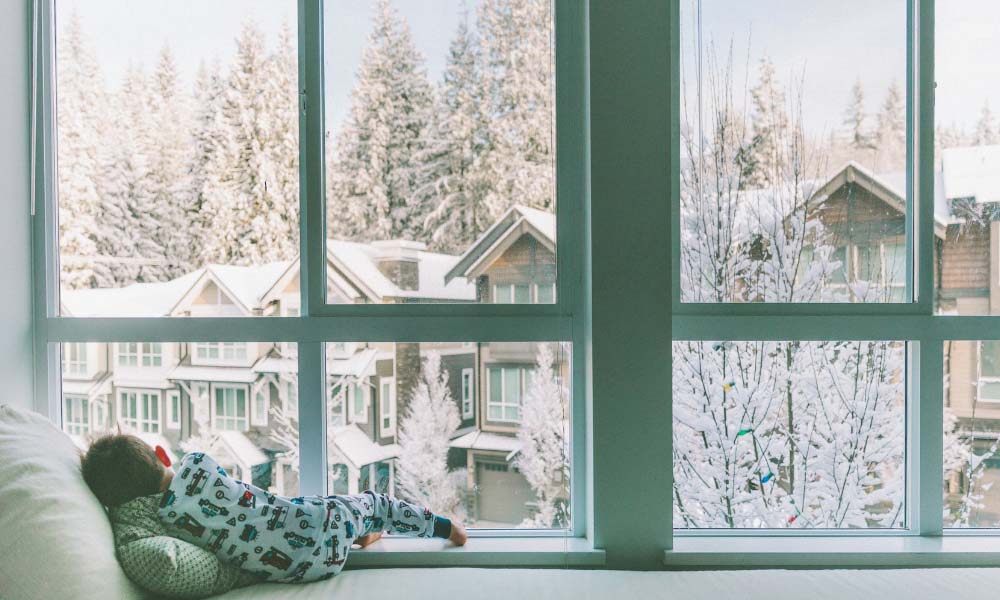There’s no denying it any longer. We’ve fallen back. Winter will happen, whether we’re ready or not. It can really be depressing and by mid-February most of the small talk conversation revolves around how over winter we are. Seasonal Affective Disorder is common, affecting women more than men. Research explains that a genetic predisposition for light-sensitive melanopsin contained in the cells of the retina plays a role in altering our circadian rhythms and moods. This desynchrony affects our hormones, appetites, and emotions. Basically, that’s all a very fancy way of saying that the change in the quality of daylight causes seasonal depressive symptoms that go beyond typical “winter blues.” People with SAD experience irritability, overeating, sadness, and difficulty sleeping. But, whether suffering from an official diagnosis of depression or not, everyone subject to "temperature deficiency" (aka winter) find ourselves wishing we could hibernate in a onesie under our covers and get up in the spring. As tempting as hibernation may be as we spiral into winter’s cold, gray bucket of suck, it’s simply not realistic. Thankfully, there are other methods we can use to fight the doldrums.
Conventional treatment for Seasonal Affective Disorder
- Mental health experts often prescribe light therapy and suggest exposure for thirty minutes in the morning, whether natural or using a sunlamp.
- Antidepressant medications can take the edge off feelings of hopelessness, sadness, and agitation.
- A hefty dose of vitamin D is also recommended to keep our bodies and minds healthy as we’re deprived of the sunlight exposure of the warmer months.
I’m sure I’ll find myself using a combination of the typically suggested treatments as the cold, dark days drag on. But, I also can’t help but think that as unrealistic as human hibernation may be, there are some lessons to be learned from species that snuggle themselves away until warmer weather. Just as the sunset at the end of the day triggers our brains to get ready for sleep, our bodies interpret signals from the rhythms of the seasons. When our routines honor that sensitivity, our bodies have the capability to adapt to seasonal changes, remaining healthier and more in balance. So this year as I prepare our family for the months ahead, we’re making seasonal lifestyle changes and trying to appreciate the unique beauty winter has to offer. I hope my children will benefit from nature’s dormant period and, as they grow, avoid the sadness, fatigue, carbohydrate-binging, and misery of depression.
Health, mindfulness, and meditation through rituals and routines
The last thing I want to deal with on a snowy, below-freezing day is not having an answer for “What’s for dinner?” I’m planning a weekly rotation of our favorite, comfort-food, meals. I’m including recipes that are hearty, nutritious, and easy to put together. Taco Tuesday, anyone? Sparing myself the mental stress of meal planning is sure to give me more time and energy for brain and mood boosting family time. I’m always looking for new reasons and fun ways to bring mindfulness into our family and this winter season and everything that comes along with it will be no exception.
Research shows that when we incorporate mindfulness practices, namely, awareness and non-judgemental acceptance of the circumstances of the present moment we improve our emotional regulation and physical health. Through regular practice of cozy, hygge rituals like candle-lighting before our bedtime prayer, and the simple pleasure of enjoying a warm cup of cocoa, we’ll be mindful of the moments of warmth and wonder winter has to offer.
Meditations are also key parts of our happy winter plan as we cultivate our hygge practice and rituals. The loving kindness meditation, intentionally sending compassionate loving thoughts to ourselves and others, has been proven to alleviate symptoms of depression. Go Zen has this kid-friendly introduction to this powerful meditation that I can’t wait to try! So, take that, Seasonal Affective Disorder! We’ll be using the season as a time to renew our spirits. We’ll be more and do less. It may not be hibernating but I think we’ll emerge as more beautiful versions of ourselves in the spring.



